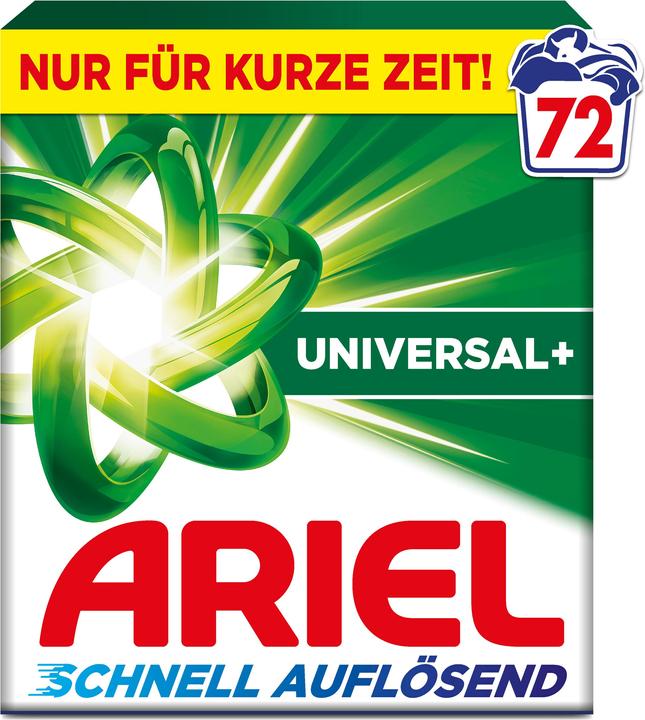
Background information
Are chalky teeth the new widespread disease? Here’s what an expert says
by Patrick Vogt

They often sneak up on you after a cold or a visit to the swimming pool: Earache. Specialist Séverine Niederer-Wüst knows what to do if your child's ears hurt.
Séverine Niederer-Wüst is a partner at the ENT practice in Gossau and a consultant otorhinolaryngologist at the Children's Hospital of Eastern Switzerland. In this interview, she explains when antibiotics are useful and why excessive ear hygiene is not a good idea.
When are antibiotics necessary?
Middle ear infections are often the result of a viral infection. Antibiotics do not help in such cases. As it is now known that frequent use of antibiotics tends to harm the organism and promote resistance, doctors are much more reluctant to prescribe the medication than in the past. However, if the middle ear infection is a bacterial infection, the inflammation must of course be treated with antibiotics.
What are the consequences if a middle ear infection is not treated?
In the worst case, the inflammation can spread to the bones or brain. There it can lead to mastoiditis or meningitis, i.e. inflammation in the mastoid process of the temporal bone or the meninges. Fortunately, serious consequences and chronic ear problems are now rare. Many parents now react more quickly to signs of illness in their children and visit the paediatrician more often.
Children also often complain of earache after a visit to the indoor swimming pool.
If children's ears hurt after swimming, this is usually because some water has got into the ear canal or the child generally has rather sensitive ears. As a rule, this is not a middle ear infection.
How should children's ears be cleaned?
The ear mainly cleans itself and earwax protects the ear canal from inflammation. Children's ears should therefore not be cleaned with cotton buds, otherwise the earwax will only be pushed further into the ear and plugs may form. Visible dirt on the outer ear, on the other hand, can be wiped off with a damp cloth.
A passionate journalist and mother of two sons who moved from Zurich to Lisbon with her husband in 2014. Does her writing in cafés and appreciates that life has been treating her well in general. <br><a href="http://uemityoker.wordpress.com/" target="_blank">uemityoker.wordpress.com</a>
Interesting facts about products, behind-the-scenes looks at manufacturers and deep-dives on interesting people.
Show all
Background information
by Patrick Vogt

Background information
by Ann-Kathrin Schäfer

Background information
by Tanja Restin
Many children complain of earache, especially in winter. How can you recognise a middle ear infection?
Séverine Niederer-Wüst, ENT specialist: Middle ear infections are common in infants. By the age of three, around 80 per cent of all children have already had such an inflammation. Typical signs are fever and earache. In addition, the eardrum is reddened and bulging, and sometimes fluid leaks from the middle ear. Middle ear infections often occur together with a cold.
What is the best way to treat a middle ear infection?
If the child is two years old or older and has a fever of less than 39 degrees, it is best to relieve the symptoms in the first 48 hours with an anti-inflammatory painkiller such as ibuprofen or paracetamol. If the fever and pain persist, a doctor should be consulted. Earache in younger children can also be treated with a painkiller first. However, if the symptoms persist, you should take them to the paediatrician after 24 hours.
Can middle ear infections be prevented?
Not really. Middle ear infections have many causes: they occur more frequently in winter, when infections are in season anyway, but also in children whose parents smoke and in children who go to nursery. In addition, predisposition or the anatomy of the eustachian tube also play a role. In some children, fluid remains in the middle ear for too long after a cold for anatomical reasons. This can lead to so-called middle ear catarrh. Sometimes this also leads to the child temporarily hearing less well. If there are repeated inflammations or prolonged middle ear catarrh, a tympanostomy tube can be surgically inserted to ventilate the middle ear.
What home remedies are there for earache?
Some parents swear by onion and curd compresses or steam baths. I have no experience of this myself, but these measures certainly don't do any harm. However, there are also home remedies that are inserted directly into the ear. In my practice, I occasionally see children whose ears have been treated at home with a mixture of garlic and olive oil, as garlic is said to have an anti-inflammatory effect. However, I advise against such measures.
Viruses and bacteria are not the only causes of earache. Sometimes a Lego brick that a child has stuck in their ear can also cause concern. What is the best way for parents to react in such a situation?
It is actually relatively common for children to put beads, peas or Lego pieces in their ears - or even in their nose. Parents should consult a doctor immediately in such a situation and not try to pull the foreign object out themselves. In most cases, they would only push it in deeper. If the child is a little older and the foreign body is stuck in the nose, they can try to blow it out.
<p

Ariel Universal+
72 Washing cycles, Washing powder